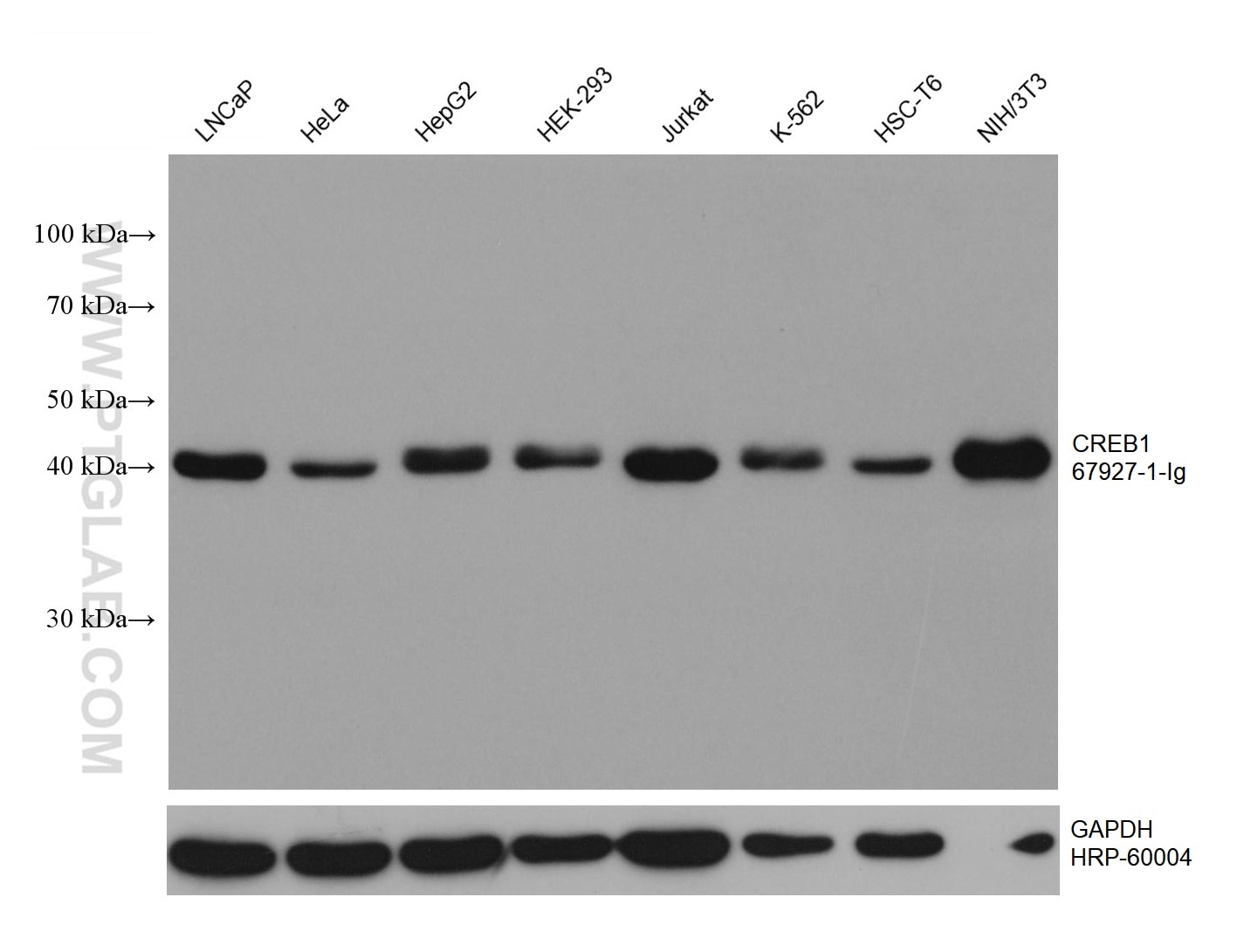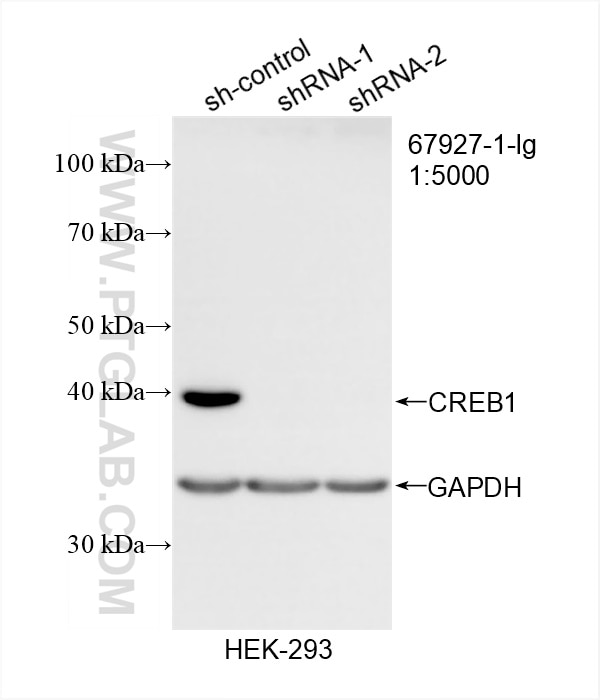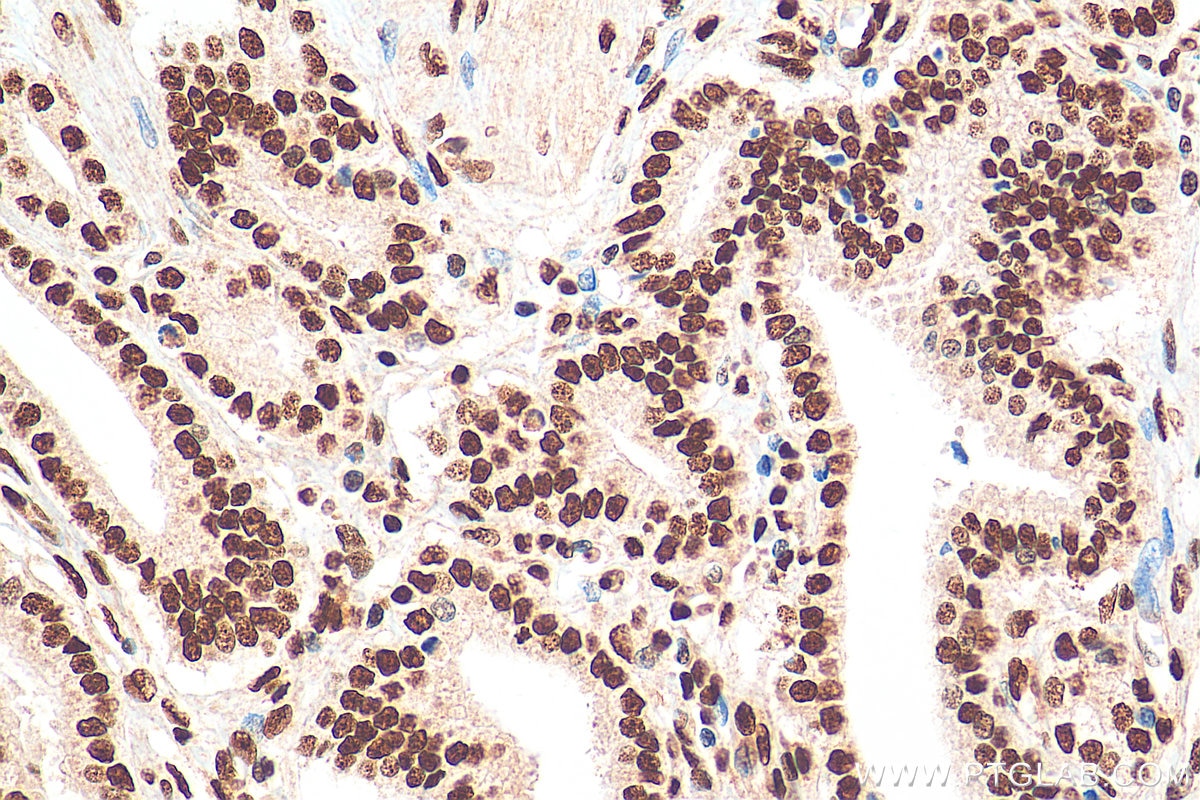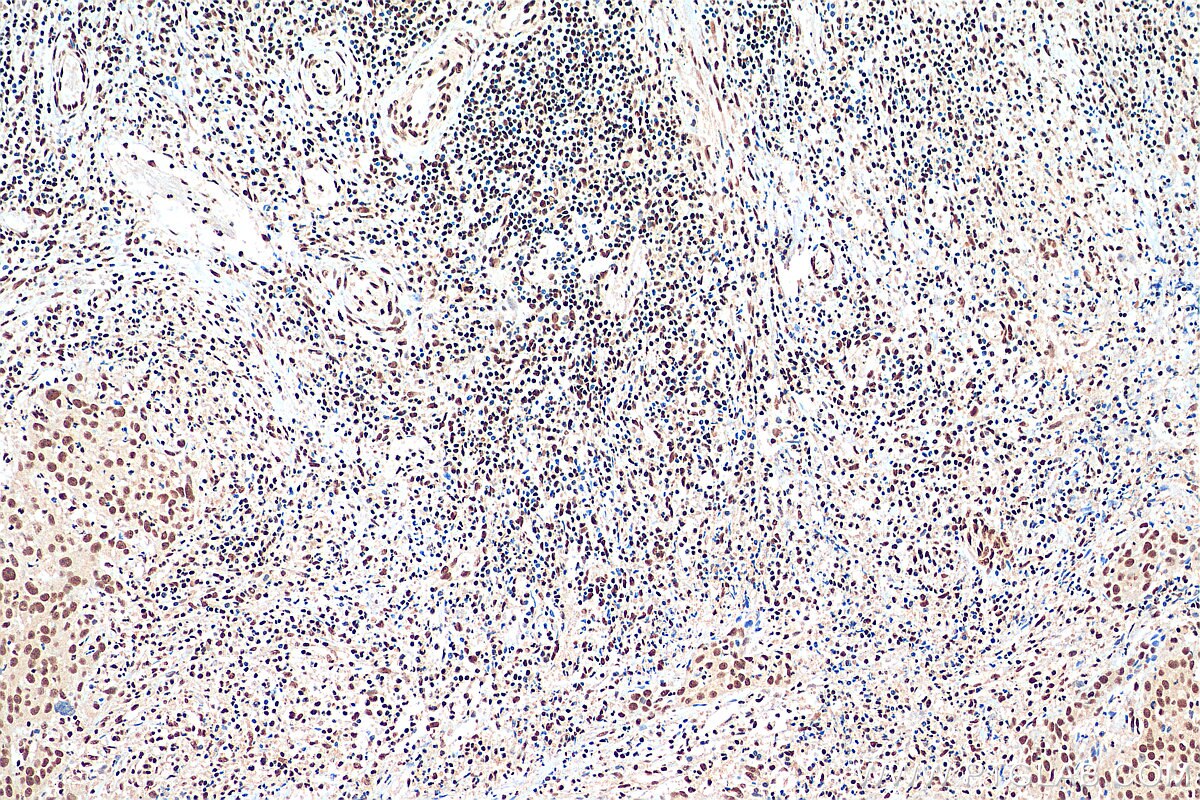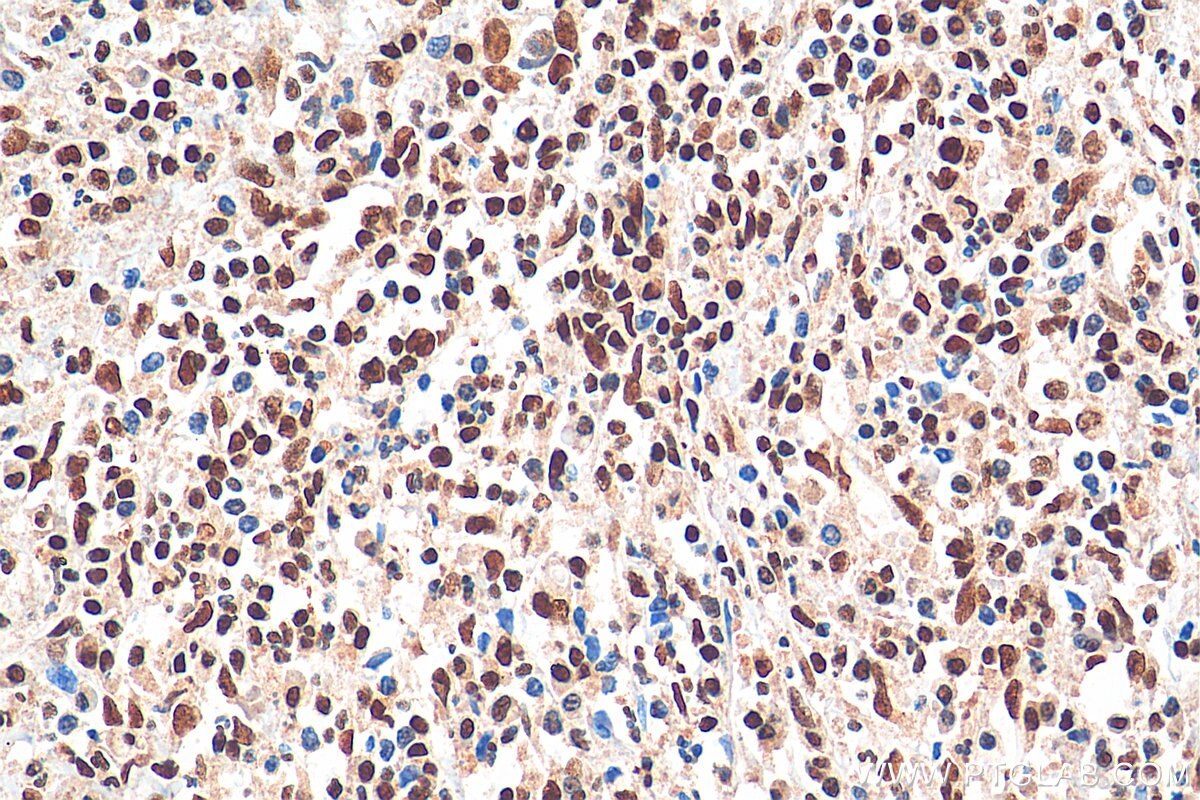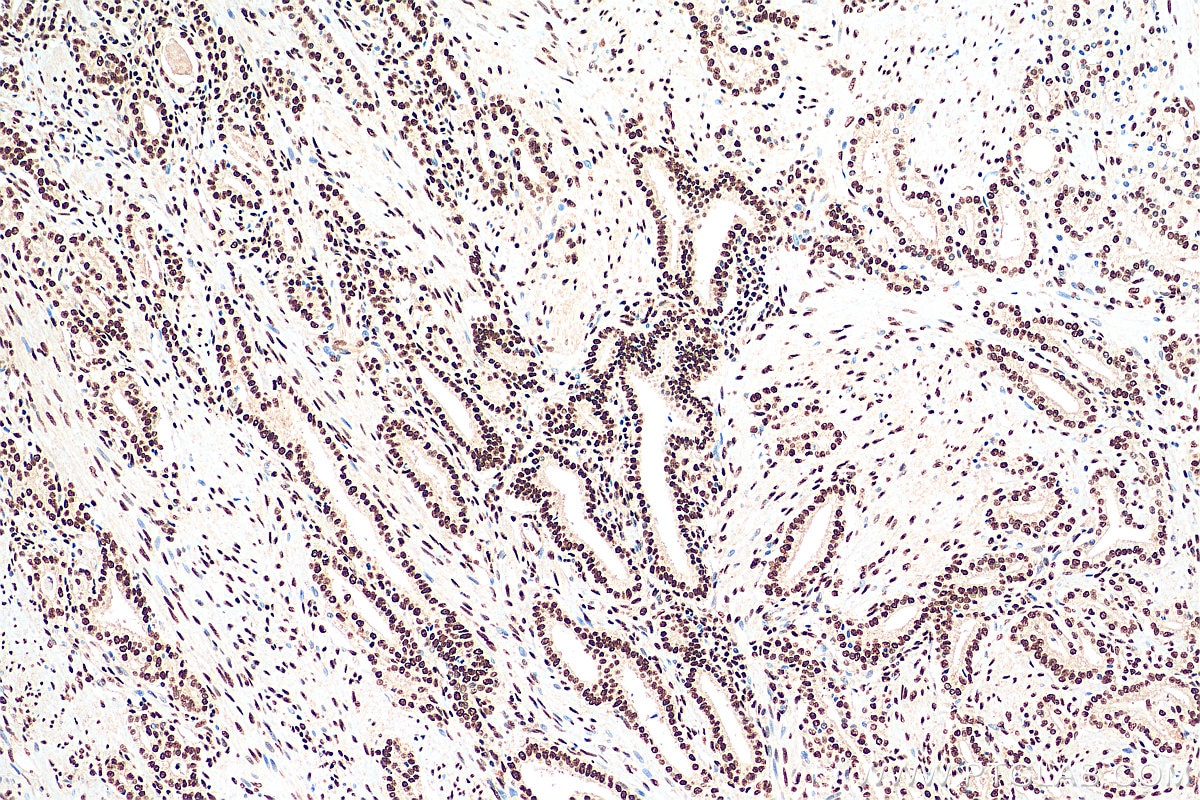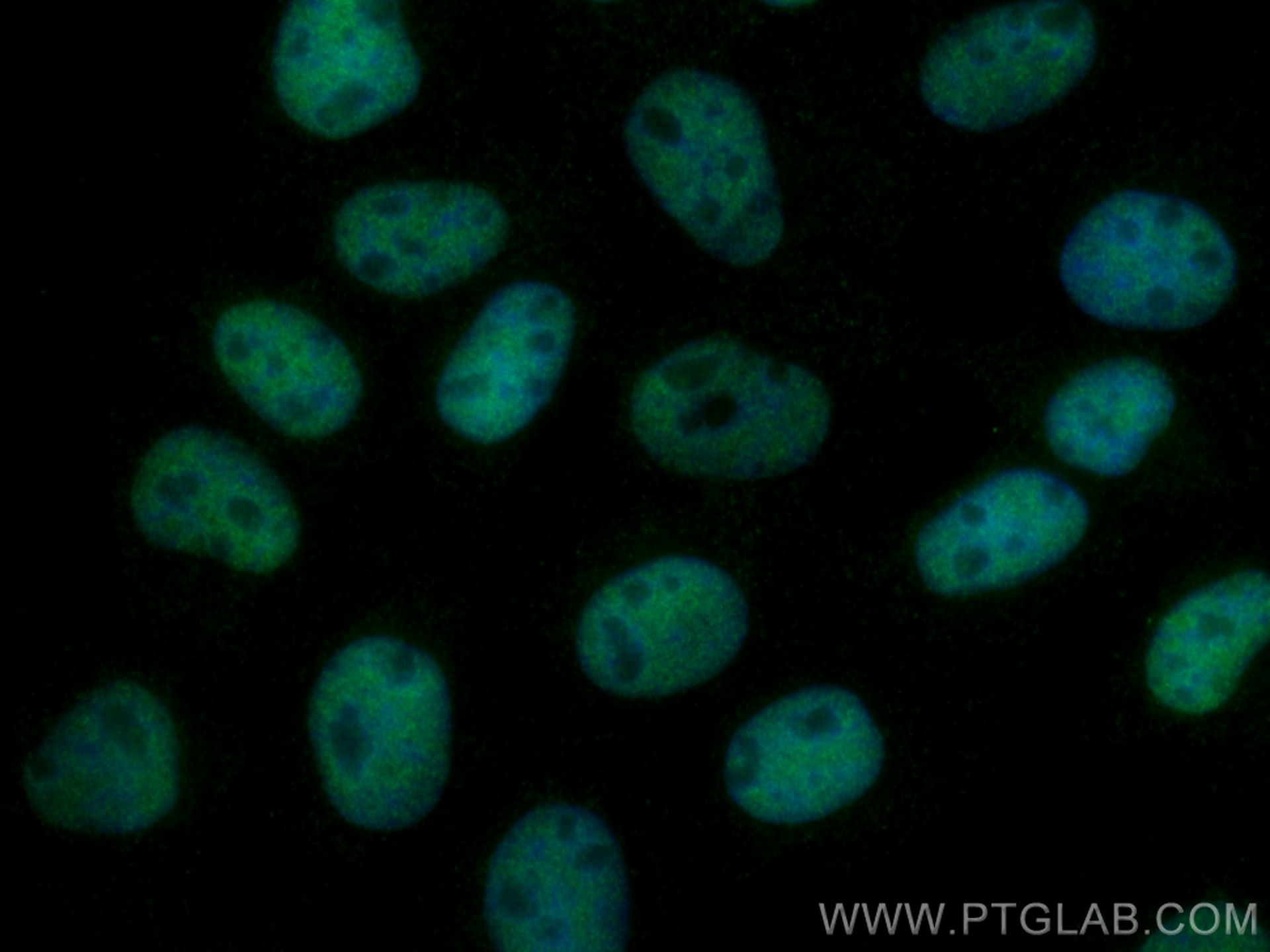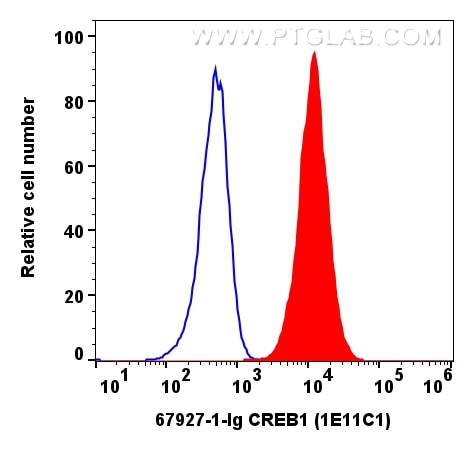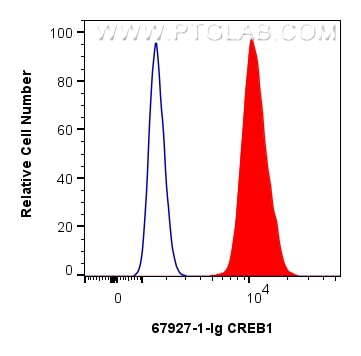- Phare
- Validé par KD/KO
Anticorps Monoclonal anti-CREB1
CREB1 Monoclonal Antibody for WB, IHC, IF/ICC, Indirect ELISA
Hôte / Isotype
Mouse / IgG1
Réactivité testée
Humain, rat, souris
Applications
WB, IHC, IF/ICC, Indirect ELISA
Conjugaison
Non conjugué
CloneNo.
1E11C1
N° de cat : 67927-1-PBS
Synonymes
Galerie de données de validation
Informations sur le produit
67927-1-PBS cible CREB1 dans les applications de WB, IHC, IF/ICC, Indirect ELISA et montre une réactivité avec des échantillons Humain, rat, souris
| Réactivité | Humain, rat, souris |
| Hôte / Isotype | Mouse / IgG1 |
| Clonalité | Monoclonal |
| Type | Anticorps |
| Immunogène | CREB1 Protéine recombinante Ag2852 |
| Nom complet | cAMP responsive element binding protein 1 |
| Masse moléculaire calculée | 341 aa, 35 kDa |
| Poids moléculaire observé | 43-46 kDa |
| Numéro d’acquisition GenBank | BC010636 |
| Symbole du gène | CREB1 |
| Identification du gène (NCBI) | 1385 |
| Conjugaison | Non conjugué |
| Forme | Liquide |
| Méthode de purification | Purification par protéine G |
| Tampon de stockage | PBS only |
| Conditions de stockage | Store at -80°C. 20ul contiennent 0,1% de BSA. |
Informations générales
CREB1, also named as CREB, belongs to the bZIP family, containing one bZIP domain and one KID (kinase-inducible) domain. This protein binds the cAMP response element (CRE), a sequence present in many viral and cellular promoters. CREB stimulates transcription on binding to the CRE. This protein is stimulated by phosphorylation. Phosphorylation of both Ser-133 and Ser-142 in the SCN regulates the activity of CREB and participates in circadian rhythm generation. Phosphorylation of Ser-133 allows CREBBP binding. Transcription activation is enhanced by the TORC coactivators which act independently of Ser-133 phosphorylation. CREB1 is sumoylated by SUMO1. Sumoylation on Lys-304, but not on Lys-285, is required for nuclear localization of this protein. Sumoylation is enhanced under hypoxia, promoting nuclear localization and stabilization. Defects in CREB1 may be a cause of angiomatoid fibrous histiocytoma (AFH), a distinct variant of malignant fibrous histiocytoma that typically occurs in children and adolescents and is manifest by nodular subcutaneous growth. A chromosomal aberration involving CREB1 is found in a patient with angiomatoid fibrous histiocytoma. Translocation t(2;22)(q33;q12) with CREB1 generates a EWSR1/CREB1 fusion gene that is most common genetic abnormality in this tumor type. CREB1 exists some isoforms and range of calculated molecular weight of isoforms are 35-37 kDa and 25 kDa, but the modified CREB1 protein is about 43 kDa (PMID: 25883219 ).
